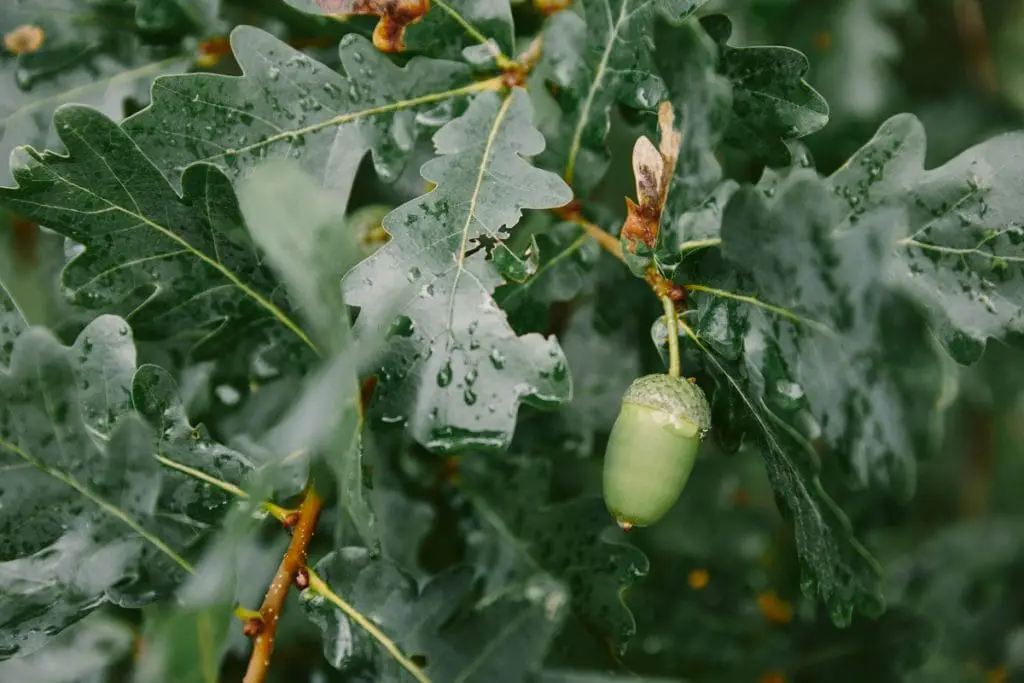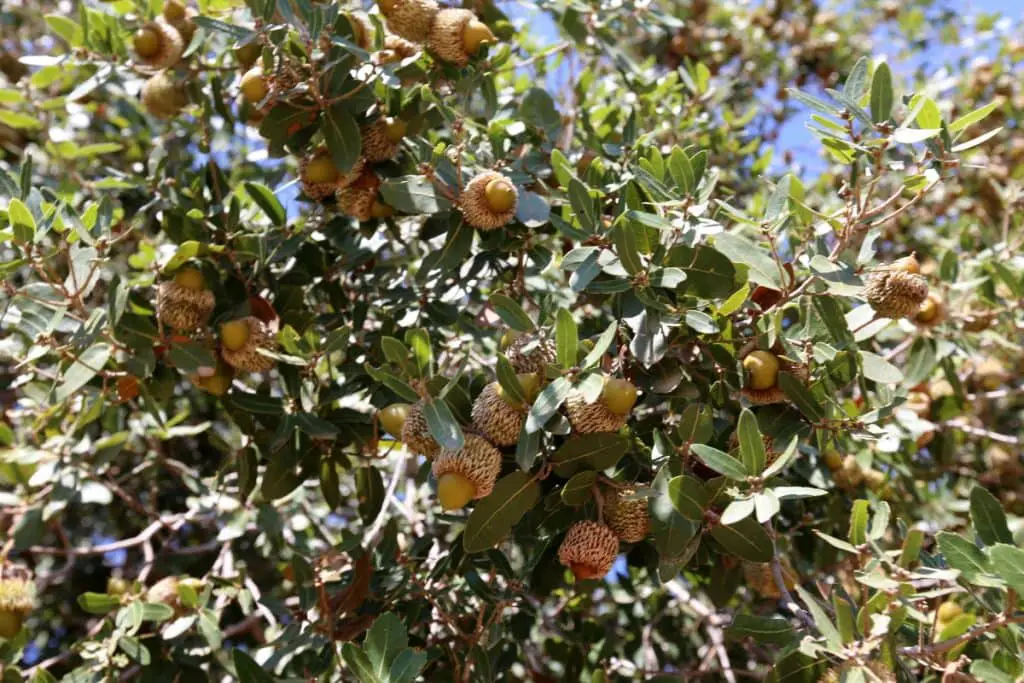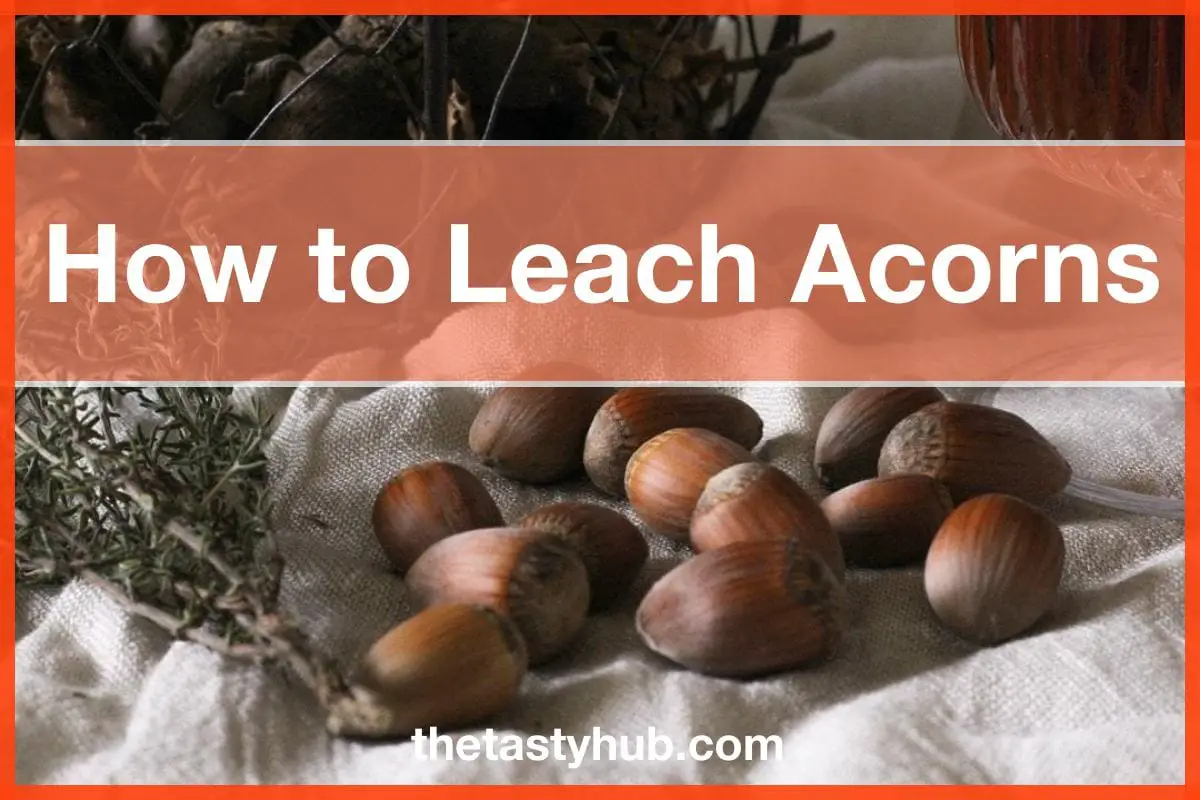Acorn trees produce acorns every year. The acorns are usually harvested during late fall or early winter. They are then dried and leached or stored for use later.
In order to get the maximum amount of nutrients from the acorns, you need to remove them from their shell and grind them to make them most easily usable as flour.
Leaching involves soaking the acorns in water at room temperature or boiling water. There are two main methods of leaching: cold and hot.
This article will cover how to cold leach acorns, how to hot leach acorns, and where to get acorns from.

Table of Contents
Cold vs Hot Leaching Acorns
Cold leaching is the best method for creating a versatile end product that is suitable for use as a fine flour or a coarse polenta.
Acorn flour doesn’t contain any gluten, so it won’t rise on its own when baking. That’s why you may see recipes call for half regular flour and half acorn flour. However, cold-leached acorn flour by itself will work on smaller baked goods, like brownies and cookies. Acorn flour can help add a rich and deep flavor to any dish you use it in.
Hot leaching cooks the starch in the acorns (making them suitable for soups and grits), so baked goods made with hot-leached flour may fall apart. Cold leaching preserves the starch that helps bind your baked goods, so if you like to bake, cold-leaching is the way to go.
How To Cold Leach Acorns
Cold leaching acorns is easy to learn, but will just take some patience as you’ll need to repeat some steps.
The first step before starting the leach process is to crack open the acorns. You can get a hand crank cracker that makes cracking multiple acorns really easy. They can be hard to find though, so one of the Drosselmeyer crackers will be good.
Last update on 2024-09-14 / Affiliate links / Images from Amazon Product Advertising API
- As you’re cracking the acorns, be sure to throw away any bad nuts, like ones with mold.
- Once you’ve cracked the acorns and separated the nut meat from the shells, it’s time to grind the acorns.
- Use a Vitamix or hand mill to grind the shelled acorns. A Vitamix will give you a finer grind that you can use for flour and baking. A hand mill will give you a coarse grind, to use in cooking foods like falafel.
- After you’re finished grinding, get a large container, glass or plastic, with a tight lid. Pour the ground acorn meal into the container, but not all the way to the top. Stick to about halfway and then fill the rest with water.
- The leaching process will begin as the tannins leach out of the nuts. The water will turn brown as well.
- When you see brown water, change out the brown water for fresh water. Change out the water at least every 24 hours.
- Repeat the process of changing the water out until you don’t taste bitterness in the acorn meal. I usually start tasting the meal after 4-5 days.
- Once the bitterness is gone, pour acorn meal out into a dish towel.
- Twist the dish towel closed, gather the four corners together, and continue to twist until water starts dripping out of the bottom of the dishcloth. If you cannot remove any more water from the dish towel by twisting and squeezing, squeeze the dish towel one more time and you should be done.
- The acorn meal is now ready to be used. You can use it right away or you can dry it and freeze it for later.
If you don’t dry the meal and decide to freeze it when still wet, be sure to adjust how much liquid you use in recipes later.
How to Hot Leach Acorns
Hot leaching acorns isn’t that different from cold leaching, except the obvious use of hot water.
- Boil the acorns in a pot of cold water with salt. Once the water is brought to a boil, simmer for 30 minutes.
- As the simmer is going on, prepare a second pot of boiling water with salt. You will start to see acorn skins come apart and float. Use a skimmer to remove them from the water.
- When the water in the first pot has browned, pour out the pot through a colander to catch the hot acorns and empty the hot water.
- Place the acorns into the second pot of boiling water and simmer for 30 minutes. Allow the water to brown. Once you’ve started this process, make sure the acorns don’t go into cool water again.
- Start preparing a third pot of cold water and bring it to a boil. Once the 2nd pot’s water has darkened, put the acorns into the third pot, following the same process of straining the hot acorns out.
- Repeat the process of moving the acorns into new pots of boiling water until the water stays clear when the acorns are boiling.
Once the acorns are leached, you can eat them right away or use them for cooking. You can also dehydrate them, pickle acorns in salted brine, or freeze them to use later.
Acorns need to be boiled at least twice before they’re ready to eat. You should never boil them in cold water because you’ll end up with bitter acorns.
Where and When to Find Acorns
In North America, look for oak trees because acorns grow on oak trees. They tend to grow in areas with deep soil and lots of moisture. If you live in a city, you may find acorns in parks or other open spaces.
Acorns come from oak trees. Oak trees are easily identified because they have lots of acorns around them. Look up which species of oaks are common in your area.
Acorns are usually collected during autumn months from September to November when they drop from oak trees. Deer and squirrels also harvest acorns, so they compete
How to Collect Acorns

Acorns should be harvested when they are fully matured and brown. Green acorns are immature and won’t last long. Make sure the caps are still on the acorns when you harvest and collect them. The ones without caps might have been exposed to worms and other bugs.
If you’re lucky enough to find acorns in the wild, harvest as much as you can without damaging the tree.
You can store them in a cool, dark place until next fall if you have extra acorns. They’ll be dry and even easier to use.
How to Wash Acorns
Acorns should be rinsed before leaching and using them. Put them in a container and add water. Remove any floating acorns, because they may have gone rotten.
Place them in a colander and wash them under running water for a few minutes to get rid of any dirt or bugs. Once done, you can dry them by hand with a paper towel or dish towel, or allow the acorns to air dry.
Once the acorns are dry, remove the shell and cap by using a nutcracker to get to the meat.
How to Leach Acorns Final Thoughts
Cold and hot leaching will help you enjoy acorns with your meals. I’m glad that my family is eating more acorn than ever before.
It’s great to see how healthy these little guys are for us. We know that acorns are packed full of vitamins and minerals, but we didn’t realize just how nutritious they are.
Read more cooking tips and recipes in these articles:
